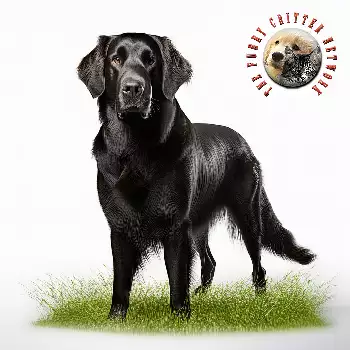The Flat-Coated Retriever approaches family life with the same enthusiasm and devotion they once brought to the hunting field, making them exceptional family companions for households that can match their energy and social needs. Their integration into family dynamics is typically seamless, as these dogs have been bred for generations to work closely with humans and to be sensitive to the needs and moods of their human partners.
With children, Flat-Coated Retrievers demonstrate remarkable patience and gentleness, despite their size and energy level. Their natural play drive makes them excellent companions for active children who enjoy outdoor activities, games of fetch, and swimming adventures. The breed's protective instincts, while not overly strong, manifest as a watchful awareness of the children in their care, often positioning themselves where they can observe and interact with young family members.
However, their size and exuberant play style require supervision around very small children. A Flat-Coated Retriever's enthusiastic greeting or play invitation can easily knock over a toddler, not from any aggressive intent but simply from their natural physical presence and bouncy demeanor. Families with young children often find that establishing house rules about calm greetings and designated play areas helps everyone enjoy the dog's company safely.
The breed's relationship with adult family members is characterized by deep devotion and a desire to participate in all aspects of family life. They often develop stronger bonds with family members who provide them with exercise, training, and interactive play, though they typically maintain affectionate relationships with all household members. Their intelligence allows them to recognize different family members' routines and preferences, often adjusting their behavior accordingly.
In multi-dog households, Flat-Coated Retrievers generally integrate well, particularly with other medium to large breeds that can match their play style. Their social nature makes them excellent companions for other dogs, and they often benefit from having a canine playmate who can help them burn energy and provide companionship during times when human family members are occupied. However, their enthusiasm can sometimes overwhelm more reserved or smaller dogs.
With cats and other household pets, success depends heavily on early socialization and the individual personalities involved. While Flat-Coated Retrievers don't typically show strong predatory behavior toward household cats, their size and playful nature can be intimidating to felines. Cats who are confident and can establish appropriate boundaries often develop good relationships with well-socialized Flat-Coats, while more timid cats may prefer to maintain distance.
The breed's role within family hierarchies is generally that of the enthusiastic participant rather than the leader. They typically accept family rules and routines readily, though their intelligence means they quickly learn to work the system to their advantage. Many families discover that their Flat-Coat has trained different family members to provide different benefits—perhaps getting extra treats from one person, special attention from another, and exercise from a third.
Their sensitivity to family emotions makes them excellent emotional barometers for the household. They often provide comfort during stressful times, celebrate during happy occasions, and seem to instinctively know when to be calm and when to be playful. This emotional intelligence, combined with their natural optimism, often makes them a positive force within family dynamics, helping to lift spirits and encourage active, outdoor lifestyles.
For families considering a Flat-Coated Retriever, it's important to understand that these dogs thrive in active households where they can be true family members rather than backyard pets. They need families who enjoy spending time outdoors, who appreciate an interactive pet, and who can provide consistent training and socialization. In return, they offer unwavering loyalty, endless entertainment, and the kind of genuine, tail-wagging joy that enriches family life for years to come.

